There’s a ridiculous number of cheap bass guitars available in today’s market. Like most products, “cheap” can also mean junk when it comes to bass guitars. This isn’t always the case of course. There are plenty of great playing, great looking, overall great value options available for you. The trick is sorting through the rubble to find the gem you’re looking for. Don’t worry I’m here to help you decide or at least make your decision easier. I’m going to introduce you to a range of affordable bass guitars, even though some of them are on the low spectrum of the price they deliver an awesome sound.
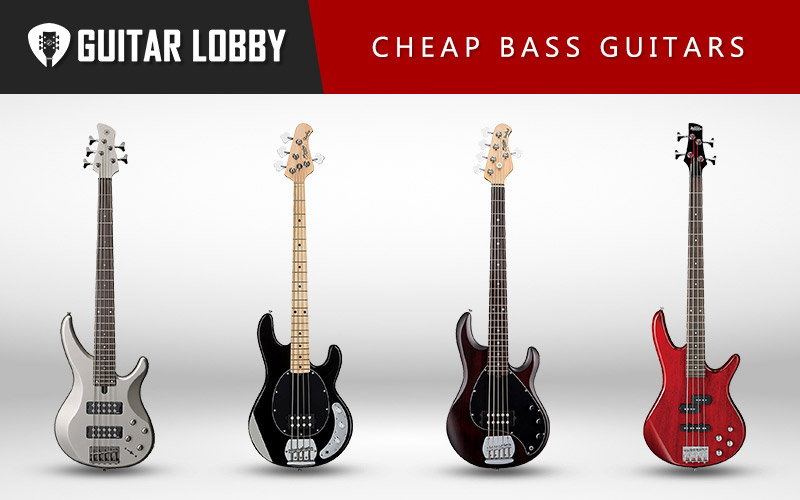
As a musician myself, I know both the stress and excitement of buying a new instrument. We’ll go through everything you need to know before you pick out your new companion. I’ll start by diving right into my list of the best cheap bass guitars available but if you’d prefer to learn more about the basics of bass guitars before looking at products, you can start with our cheap bass guitar buying guide at the bottom of the page here.
| Name of Product | Image of Product | Description | Price Range | Full Review |
|---|---|---|---|---|
| 1. Squier Classic Vibe 60s Precision Bass (Best Overall) | 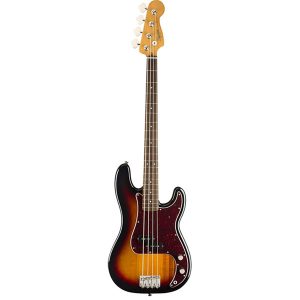 | Weight: 11 lbs Material: Poplar body, maple neck | $400 | Read Full Review Below |
| 2. Yamaha TRBX 305 (Best 5 String | 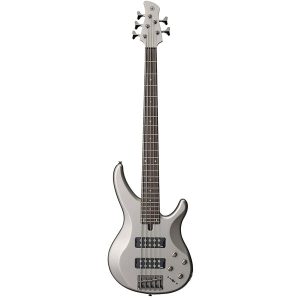 | Weight: 8.88 lbs Materials: Mahogany, Maple/Mahogany 5-piece neck | $400 | Read Full Review Below |
| 3. Ibanez GSR 200 (Best Value) | 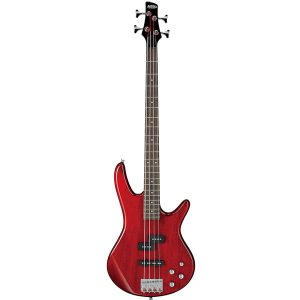 | Weight: 9 lbs Materials: Agathis body, maple neck | $300 | Read Full Review Below |
| 4. Squier by Fender Bronco Bass | 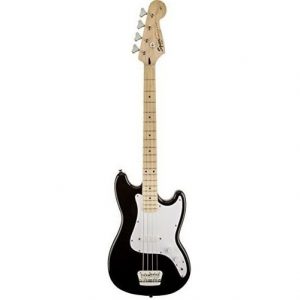 | Weight: 9 lbs Materials: Agathis body, maple neck | $200 | Read Full Review Below |
| 5. Sterling by Music Man SUB Ray5 | 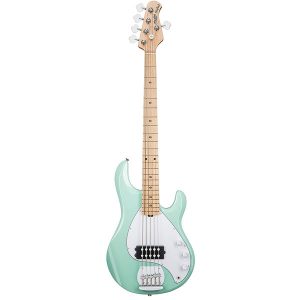 | Weight: 9lbs Materials: Basswood, Maple neck | $350 | Read Full Review Below |
| 6. Sterling by Music Man SUB Ray4 | 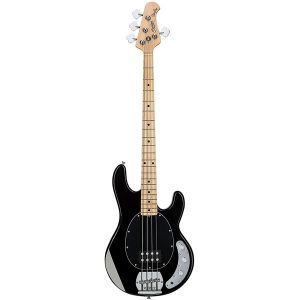 | Weight: 9lbs Materials: Basswood body, maple neck | $300 | Read Full Review Below |
| 7. Ibanez Talman TMB100 | 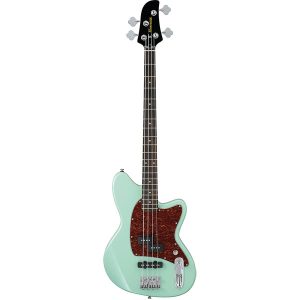 | Weight: 9 lbs Materials: Poplar body, maple neck | $200 | Read Full Review Below |
| 8. Dean Edge 1 | 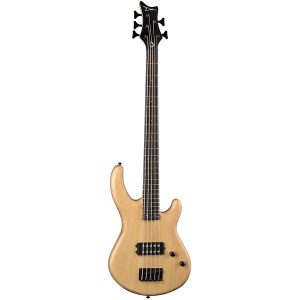 | Weight: 7 lbs Materials: Basswood body, maple neck | $200 | Read Full Review Below |
| 9. Yamaha TRBX174 | 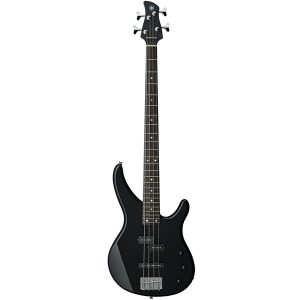 | Weight: 9 lbs Materials: Alder body | $200 | Read Full Review Below |
| 10. Ibanez GSRM20 Micro | 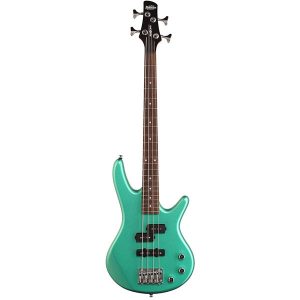 | Weight: 8 lbs Materials: Agathis body, maple neck | $200 | Read Full Review Below |
| 11. Dean Edge E09M | 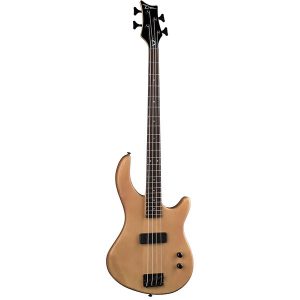 | Weight: 9 lbs Materials: Basswood/mahogany body, maple | $200 | Read Full Review Below |
| 12. Epiphone Toby Standard-IV | 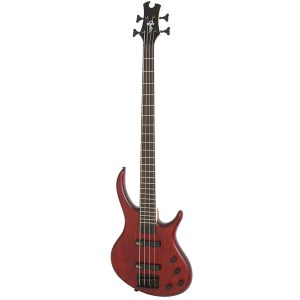 | Weight: 8 lbs Materials: Radiata body, maple neck | $200 | Read Full Review Below |
| 13. Jackson Series Spectra JS2 | 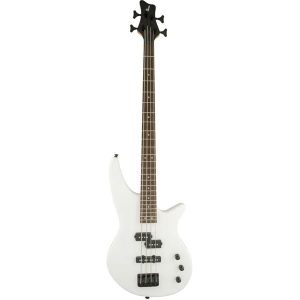 | Weight: 9 lbs Materials: Poplar body, maple neck | Read Full Review Below | |
| 14. Peavey Milestone | 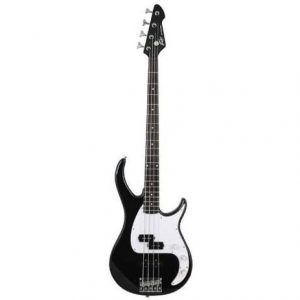 | Weight: 12 lbs Materials: Maple body, maple neck | $200 | Read Full Review Below |
| 15. Yamaha TRBX204 | 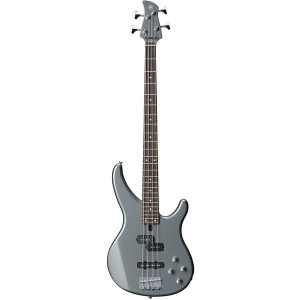 | Weight: 11 lbs Materials: Mahogany body, maple neck | $300 | Read Full Review Below |
| 16. Gretsch G2220 Junior Jet II | 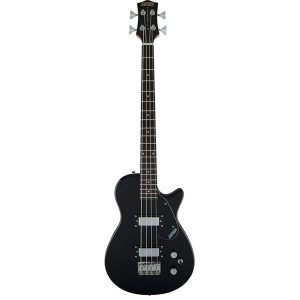 | Weight: 9 lbs Materials: Basswood body, maple neck | $300 | Read Full Review Below |
| 17. Daisy Rock Candy | 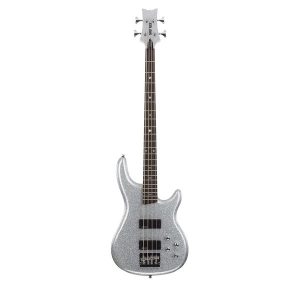 | Weight: 7 lbs Materials: Sycamore body, maple neck | $300 | Read Full Review Below |
Here Are the Best Cheap Bass Guitars
1. Squier Classic Vibe 60s Precision Bass (Best Overall)
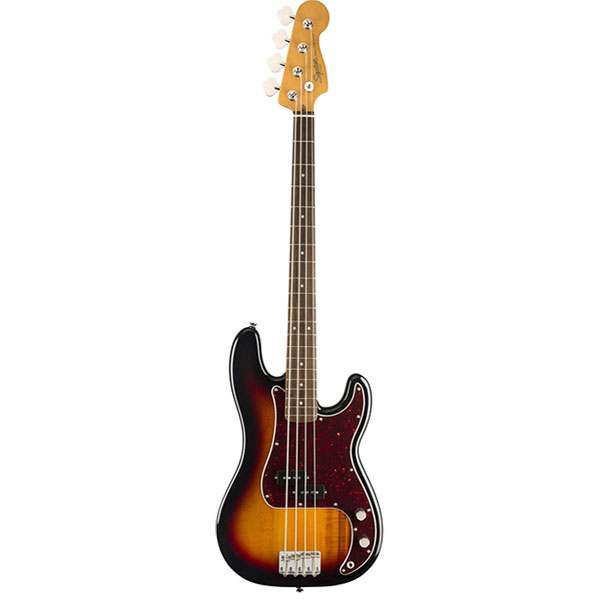
| Estimated Price | $400 |
| Weight | 11 lbs |
| Material | Poplar body, maple neck |
| Fretboard | Indian laurel, 20 frets |
| Pickup Configuration | Fender Designed Alnico Split-Coil |
My Review: With the look of the early P-basses and its vintage body you cannot but give this bass some love. It’s sleek and light, playable and it has that old school tone inspired by the ‘60s P-Bass. The punchy fat tone is still there bringing the Pino out of you when you play. The body is quite comfortable, and the C-shape neck fills out the hand and feels just right, a solid alternative to the more expensive Fender P-bass.
Key Specs and Features: With the comfortable contoured body shape it provides great stability when playing standing or sitting. The body is made out of poplar with a nice vintage gloss finish, while the bolt-on neck is made out of maple with a beautiful Indian laurel fretboard that is something to be desired. It has 20 narrow-tall frets and a long-scale length. The nut is made from a bone that is a nice interesting touch as it really transfers the vibrations through the bass. The standard split-coil passive pickup you would expect on a P-bass, Fender yet again found a way to produce that legendary fat punchy tone. Fender specially designed the Alnico pickups for this bass, and it proved to be a really nice feature. The 4-Saddle vintage-style bridge with threaded steel saddles points out the P-bass look even more. All of the other hardware is in the style of the P-bass, bridge, and neck control knobs with the master volume knob.
Target Customer: For players who are lovers of that classic P-bass look and sound, who like players like James Jamerson to Pino Paladino, this is a great buy at an affordable price. Intermediate players who like to play around with different styles of music are going to love this bass.
Bottom Line: As a P-bass lover myself I can tell you this is a solid bass that goes beyond the expectations considering the price. Squier Classic Vibe ’60s Precision Bass still sets the affordable standard in electric bass guitars. Overall, I would say this is the best cheap bass guitar out there.
2. Yamaha TRBX 305 (Best 5 String)
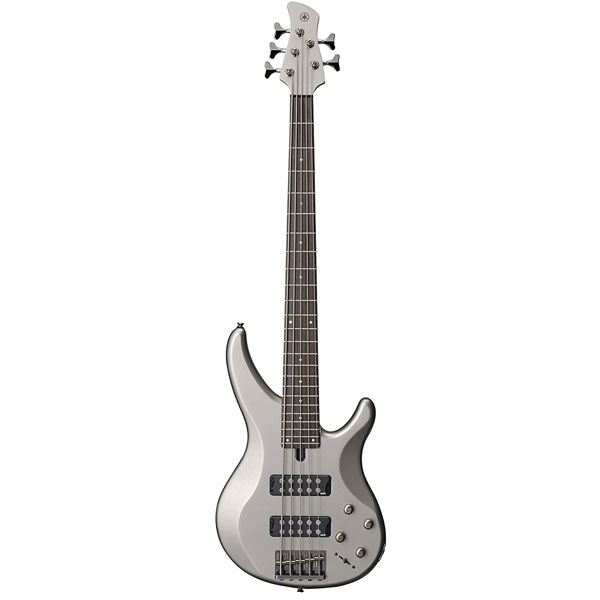
| Estimated Price | $400 |
| Weight | 8.88 lbs |
| Material | Mahogany, Maple/Mahogany 5-piece neck |
| Fretboard | Rosewood, 24 frets, long scale |
| Pickup Configuration | 2x MHB3n (Ceramic) |
My Review: It’s one solid bass, it has a nice the curvy body shape with a fine cutaway for fretboard access when soloing. It looks sleek and easy to wear, and the finish looks nice. It has a great powerful tone, clean and resonant. I think it can do well in most musical areas, it lacks a little finesse but for this price range, it sure does play well and sounds punchy. I like the slap feature it has on its EQ switch, really cool addition.
Key Specs and Features: The guitar ways around 12 pounds, which is an above-average weight for a five-string bass. The body is made from mahogany and it has a deep cutaway which really looks stylish and has a good function. TRBX uses a precision fitted bolt-on neck joint for maximum adjustability and clear, punchy tone, the 5-piece mixture between maple and mahogany is quite comfortable for faster fingerboard action. It is a long-scale (34”) bass with a smooth rosewood fretboard with 24 frets and it has dots on the fretboard that allow for better playability. It has an active 2-band EQ and a 5-way performance EQ switch which is a unique addition that surprised me, it allows for better tone control and tone creating when playing different musical styles. The 5-way EQ switch has built-in presets for different playing techniques, solo feature, finger, flat, pick and slap. Each one of the presets changes the tone significantly. The two M3 oversized ceramic humbuckers perform quite well and deliver a solid tone without any hum. The pickups also have a built-in thumb rest which is a nice feature.
Target Customer: Yamaha sure does know how to produce quality instruments in the more affordable price range as the Yamaha TRBX305 MGR is an instrument for bass players on an intermediate semi-professional type level, also studio musicians can find it handy doing sessions.
Bottom Line: Easy to play, good tone controls, looks nice, well balanced, a good buy.
Popular Related Article: The Top 5 String Bass Guitars (All Price Ranges)
3. Ibanez GSR 200 (Best Value)
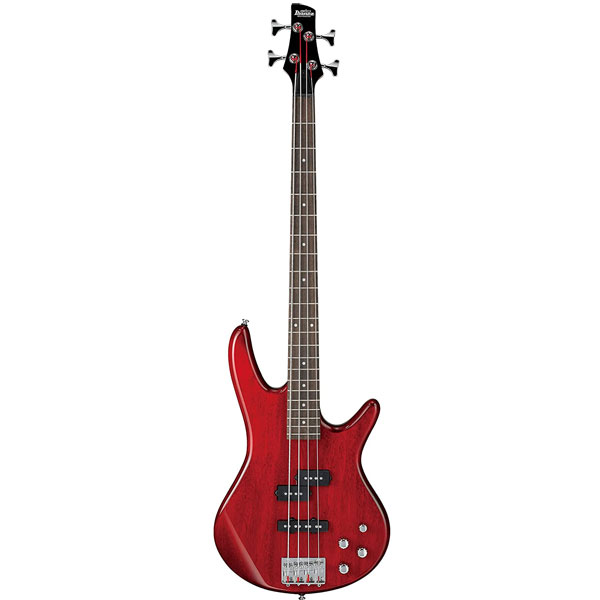
| Estimated Price | $300 |
| Weight | 9 lbs |
| Material | Agathis body, maple neck |
| Fretboard | Rosewood, 22 frets |
| Pickup Configuration | Split-coil, single-coil |
My Review: Ibanez introduced the Soundgear or SR series in 1987. The idea was to build a smooth playable instrument that musicians can put their trust into. This Ibanez bass came as surprise to me considering they decided to put an active set of electronics, unlike most other brands, with the strange pickup set up this bass stands out from the rest in its price range. It is an entry-level bass but still, it provides a wide range of tone shaping, it has a nice warm sound with a good low-end response. For the price range of course there are going to be limitations on what you can do, but still, it fairs quite well in different genres of music. Ibanez tried to make a bass with a little bit of everything which I think is a good thing as that is something quintessential for beginner bass players. You can play around and experiment with the sound.
Key Specs and Features: The body is a smaller size, straightforward, made out of agathis which is quite light and it gives the bass a warm tone with good presence. The body has rounded edges which make it comfortable to hold and play with a bevel in the top corner where your armrests. The thin neck is made out of maple with cool pearl dot inlays on a nice rosewood fretboard. There are 22 frets with a scale length of 34”. It has a standard synthetic nut and a set of die-cast tuning machines. The pickup setup is interesting, one with one split-coil at the neck and one single-coil at the bridge with control knobs for each one and a master volume knob. It comes with active electronics which is rare for this price range. One of the standout features of this guitar is the Phat ll EQ knob which gives you an extra bass boost.
Target Customer: It is an overall great beginner’s bass, with good playability, smooth neck, and design. Somebody would say shorter scale basses are better for beginners which are true, but this bass compensates for that with its light body and frame.
Bottom Line: Great for jamming with friends and building skill, this bass by Ibanez hits the spot with its qualities in the affordable range of instruments. Its sturdy, loud, and bassy, everything you would expect from an Ibanez. In my opinion, this is the best cheap bass guitar for the money.
4. Squier by Fender Bronco Bass (Best Short Scale)
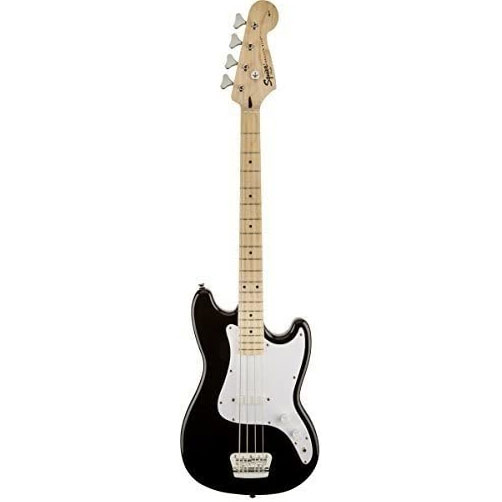
| Estimated Price | $200 |
| Weight | 9 lbs |
| Material | Agathis body, maple neck |
| Fretboard | Maple, 19 frets |
| Pickup Configuration | Single-coil magnet |
My Review: I didn’t expect the punch this bass can deliver with its single-coil magnet. This bass can do well in a lot of different styles of music with its warm and rich tone, it can carry the low end quite well, of course, you can’t expect the depth of a P-bass, but it certainly proves its worth.
Key Specs and Features: For a cheaper bass I’m really surprised how sturdy it is, the body is double-cutaway made from solid agathis and it’s quite light, the neck is slim C-shape made out of one-piece maple with a satin finish that provides a solid tone and is very comfortable to play. As it’s a short-scale(30”) it lacks the depth of long-scale basses, and the sound it produces is less wiry. The fretboard is also made from maple and it has 19 medium jumbo frets which are good for beginners, the radius of the fretboard is 9.5”. As expected from a short-scale bass, sacrificing the range of notes for a lighter and more playable instrument. It has just one specially designed single-coil magnet that shapes the sound of the bass with the passive setup. With the 2-saddle chrome bridge, tuning on the bass holds up fine as long as you don’t start digging in too much. It contains two knurled dome control knobs, a master volume knob, and a master tone knob similar to a P-bass. All of the hardware is in chrome finish.
Target Customer: A good buy for beginner bassists, the shorter scale provides easier playability, its perfect if you want to jam or practice. Also if you are a little bit smaller built or have smaller hands it’s a good pick for you, also a good start if you are transitioning from guitar to bass.
Bottom Line: As far as simplicity goes you can’t go much farther than this bass, less hardware fewer problems, keep it simple and groovy. A bass anyone can play, for 200$ you get your money’s worth.
Popular Related Article: Short Scale Bass Guitars You Need to See
5. Sterling by Music Man SUB Ray5
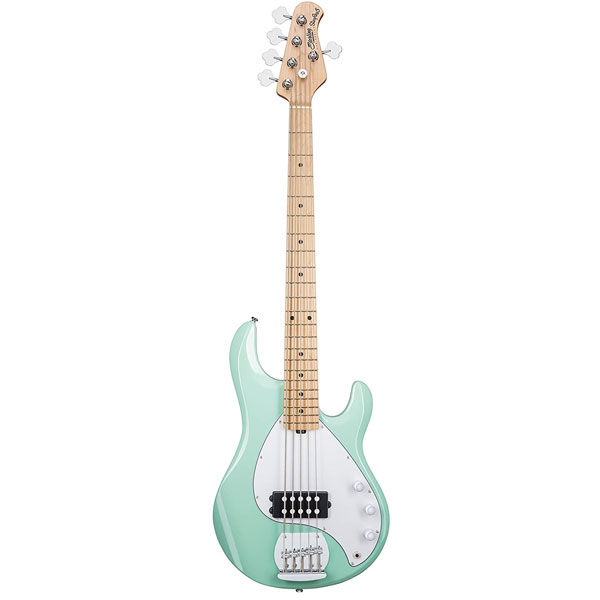
| Estimated Price | $350 |
| Weight | 9lbs |
| Material | Basswood, Maple neck |
| Fretboard | Maple, 21 frets, long scale |
| Pickup Configuration | H-1(ceramic) humbucker |
My Review: It feels like a Music Man instrument in every way, robust and quality built it packs a punch for the price. The punchy low end is still there although there is no midrange EQ, the bass performs quite nicely. It has quite a round tone when both EQ settings are set flat which I like. The lower B string can put on quite a display regardless of the lack of midrange EQ. It’s not a finesse instrument but it covers that with its playability and performance.
Key Specs and Features: The body is made from basswood while both the neck and the fretboard are from maple giving it that nice bright color. The fret dots are black which I think is a nice contrast with the white satin-finished maple neck. You can find them on the fretboard and the side of the neck. The frets on the fretboard are nice with no sharp ends and the body feels quite comfortable when you strap on the bass. With the basic headstock bias, the style of the bass is what you would expect out of a Music Man bass, robust and sturdy modern version of a Fender Jazz bass. It’s 9 pounds heavy which is an average weight. The fretboard contains 21 frets and it’s a long-scale (34”). It has a 2 band active EQ which gives the player the freedom to sculpt their tone. The active preamp has controls for volume, bass, and treble which offer maximum flexibility in finding your sound. It has one humbucker that is positioned closer to the bridge that delivers that punchy bright tone.
Target Customer: A good buy for players that gig and travel a lot and need a sturdy instrument that can handle the strains of transport, it can make up for much more expensive instruments with its affordable price and consistent quality.
Bottom Line: You can’t make a bad call with this one, for the price range you get a solid instrument that is going to last.
6. Sterling by Music Man SUB Ray4
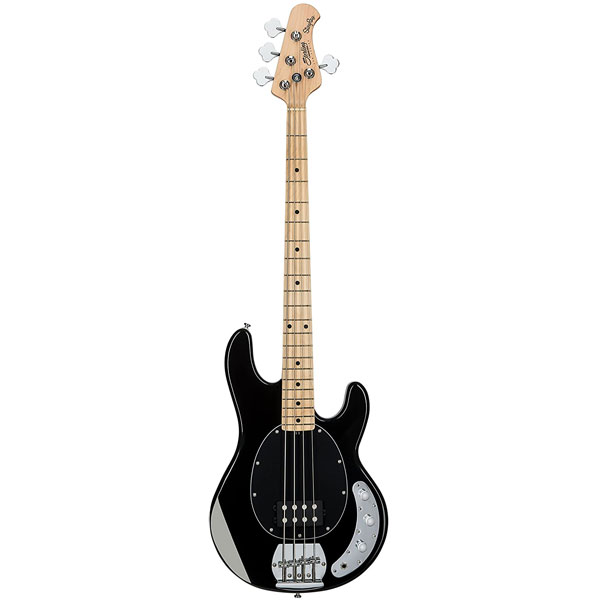
| Estimated Price | $300 |
| Weight | 9lbs |
| Material | Basswood body, maple neck |
| Fretboard | Maple/rosewood, 21 frets |
| Pickup Configuration | H-1(ceramic) humbucker |
My Review: The bass has a nice way of giving you a wide range of options for shaping your tone. Really good definition when playing and great for precision stuff which was a surprise considering it to be a lower budget instrument. The single low noise passive humbucker works pretty sweet with the active 2-band EQ. It seems to limit but in reality, it’s quite the opposite, you get a lot of possibilities and the sound from the single humbucker is excellent. The neck feels great with the satin finish, never sticky it always feels fresh.
Key Specs and Features: In the style of Music Man bass guitars, the shape is pretty much the same as other Sterling editions with the double-cutaway, even thou a licensed copy of the quality and the playability of the instrument comes close to Music Man. The body is made out of basswood that has its own benefits and it’s a good choice, the neck is a 6-bolt on, made out of hard maple piece with maple or rosewood fretboard and a scale length of 34”. It has 21 medium-jumbo frets that work great with the slim satin tint neck and narrow nut. Active 2-band EQ with a single ceramic high output humbucker gives you the freedom to sculpt your tone, with knobs for master volume, bass, and treble. It has a great natural tone and clarity with a cool 3-screw adjustment system for better pickup positioning, angle, and height.
Target Customer: An excellent beginners bass, it exceeds all expectations. It’s great when you are starting out, for practicing and catching new grooves and feel, and also with its quality it can be used down the line by intermediate players also.
Bottom Line: If you want to slap this bad boy and channel that inner Flea you have, you are going to be happy with this bass, affordable price with quality that’s going to last you for quite some time it has its place among the more refined bass guitars in its price range.
Popular Related Article: The 21 Highest Rated Bass Guitars
7. Ibanez Talman TMB100
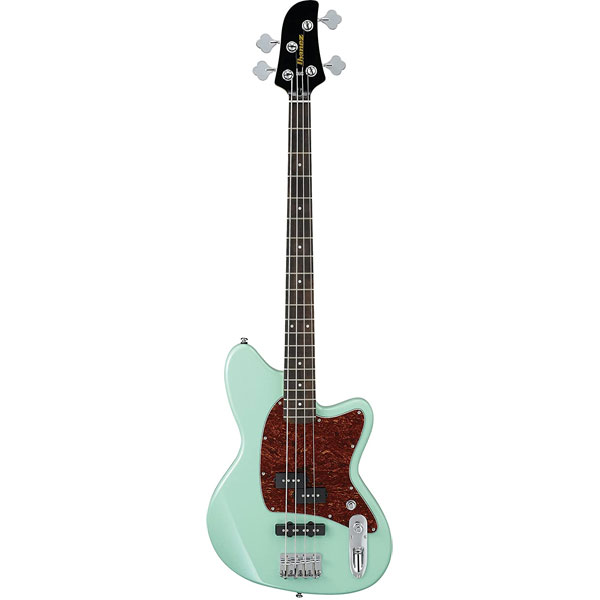
| Estimated Price | $200 |
| Weight | 9 lbs |
| Material | Poplar body, maple neck |
| Fretboard | Rosewood, 22 medium frets |
| Pickup Configuration | Split-coil Dynamix, single-coil Dynamix |
My Review: For such a low price the sound of this TMB100 is fantastic, fast, strong, and versatile. In my humble opinion, it’s perfect for metal and rock music with its punchy tone, but it can also fare well in genres like blues and jazz. The tone controls are simple and the neck and fretboard have nice playability. In the 200$ price range, it can put other basses to shame.
Key Specs and Features: The body of the TMB100 is like a mixture of modern and vintage ideas combined into one bass. With the style that is almost classic-like, the body of the bass is made out of poplar with a top wing being more pronounced than the bottom and outlined belly cut for an added comfort for playing the bass standing and in sitting position. Poplar as its tonewood provides beefy warm tones and crisp bright full-bodied sound. The neck is bolt-on, 34” scale length, made out of solid maple with 22 medium-size frets and a rosewood fretboard. The nut of the guitar is made of a synthetic material, which results in the guitar having little to no string buzz at all. The pickup setup on the TMB100 is quite interesting, one split-coil passive Dynamix neck pickup and one single-coil Dynamix at the bridge With these two the bass gets a really punchy tone. There are two control knobs for master tone and master volume, conveniently placed at the lower bout. As for the tuners they are decent, chrome 2+2 combination on the headstock, and fixed chrome bridge on the other end.
Target Customer: I would recommend this bass to anyone who’s looking for a versatile bass within this price range with “Fender – like” abilities with the added punch of a preamp.
Bottom Line: This is essentially a version of the Sterling Sub Ray in terms of the value per dollar as well as volume. You are certainly getting a lot of bass for the money here, highly enjoyable and highly recommended.
8. Dean Edge 1
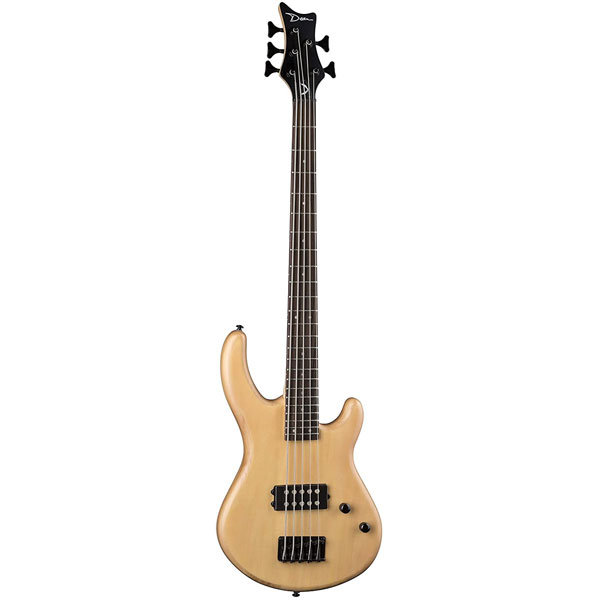
| Estimated Price | $200 |
| Weight | 7 lbs |
| Material | Basswood body, maple neck |
| Fretboard | Walnut, 24 frets |
| Pickup Configuration | DMT humbucker |
My Review: Don’t be fooled by its looks this bass holds its own amongst other basses in its price range. It reflects every bit of Dean’s 20-plus years of experience in designing bass guitars. At first look, it doesn’t seem that it has many tone pickup combinations, but it turns out that it does. I like mainly the tone of this bass. It has many combinations such as vintage jazz to punk, to progressive rock, to blues. I like the fact that the slapping sounds so awesome on this bass. It’s quite light which is good for posture when playing standing, nevertheless, all that wood gives it a unique sound, and it’s really sturdy which is good when traveling and gigging a lot.
Key Specs and Features: The body design is quite modern, an offset body made out of light basswood with a nice satin finish. The 34″ scale C-shape maple neck is sleek and has good playability, attached to the body with a 4-bolt pattern. It contains 24 frets with a beautiful 2-octave walnut fretboard. It has dome black knobs, master volume, and tone control. It has a single DMT Design humbucker in the bridge position and die-cast tuners complete this no-frills bass. The single humbucker really gives it a good pop, a warm punchy tone that brings out the character of the bass. All the hardware is black with nice pearl dot fingerboard markers.
Target Customer: This bass is a really good buy for a beginner bass player who is starting out. For somebody that is out to have fun grooving and not worrying too much about if his instrument is going to withstand the strain. It has good versatility and it can be used in different musical styles.
Bottom Line: A solid bass, with a modern body design and a light body that is a big plus considering other basses in its price range. As a low budget bass, it brings a lot to the table.
Popular Related Article: Here Are Our Favorite Bass Guitar Pickups
9. Yamaha TRBX174
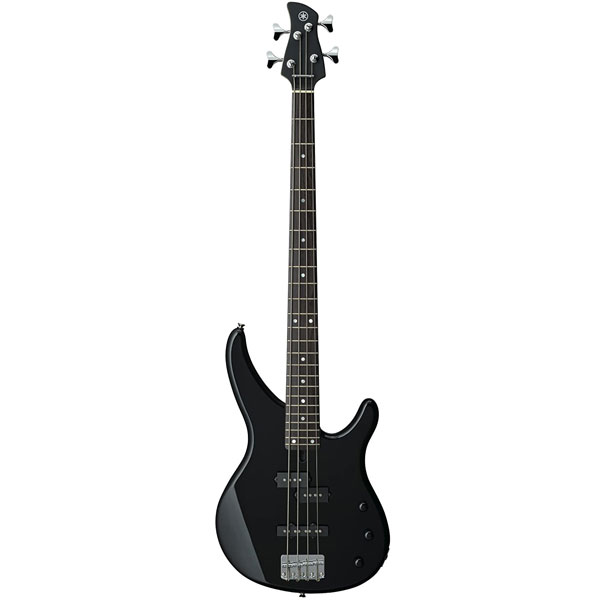
| Estimated Price | $200 |
| Weight | 9 lbs |
| Material | Alder body |
| Fretboard | Rosewood, 24 frets |
| Pickup Configuration | Split-coil, single-coil |
My Review: With its simple design this bass makes up for it with playability and functionality. I prefer simple looks too flashy ones, and also you can’t expect too much in a 200$ price range. It’s sleek and neat with a decent sound, the stock pickups offer a good range of tones. It can be punchy or smooth, they deliver the sound clearly and the output is decent. Of course, it has its limitations, not quite for studio sessions where you need precise tone control, but for jamming and practicing is good enough.
Key Specs and Features: The TRBX174 basses have bodies made of alder, it’s quite light around 9 lbs which is great for an entry-level bass. Alder is known to have a resonant, balanced and full-bodied tone, with a slight emphasis on the upper midrange because of its dense grain. It also has a sharp attack and excellent sustain. The shape of the body is simple and well-balanced with a gloss polyurethane finish. The neck is made from sturdy solid maple with a bolt-on system and a silky smooth satin polyurethane finish. Topping the neck is a rosewood fretboard with dot inlays and a 10” radius. Featuring chrome hardware it’s equipped with a vintage-style bridge with four fully adjustable saddles. The standard covered die-cast tuners on the headstock do their job well. The Yamaha TRBX174 is fitted with two passive ceramic pickups designed by Yamaha. A P/J configuration, the “J” stands for Jazz bass style single-coil pickup in the bridge position, and “P” stands for Precision Bass style split-coil in the neck position. This Pickup Configuration is good as it lets you explore the wide range of tones you can make on this bass. You do get a master tone control knob and two volume controls, one for each pickup.
Target Customer: For people who are looking for a great beginner instrument that lets them start playing bass on a small budget this Yamaha TRBX174 is the one. It offers everything a beginner could need and a little over.
Bottom Line: Considering its features and price you get a hell of a beginner’s bass. Good for beginners, practice, jamming, or some recording work where you need a decent-sounding bass track. Maybe it’s not a top-quality model but you certainly get more than its price implies.
10. Ibanez GSRM20 Micro
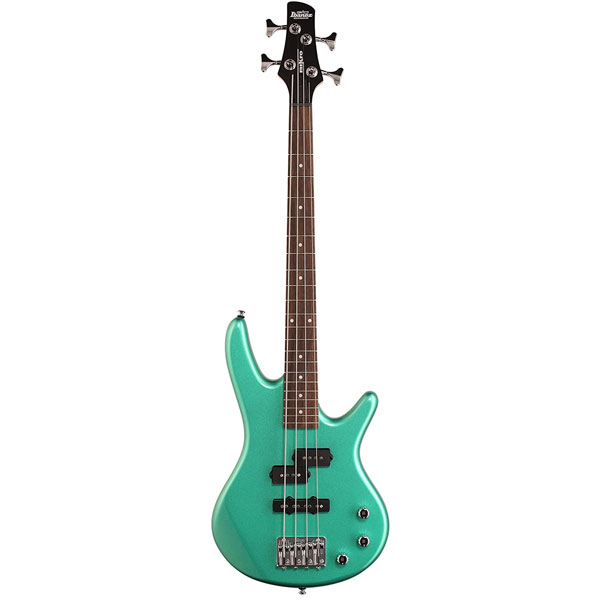
| Estimated Price | $200 |
| Weight | 8 lbs |
| Material | Agathis body, maple neck |
| Fretboard | Rosewood, 22 frets |
| Pickup Configuration | Split-coil, single-coil |
My Review: What really stands out about this bass is the capability of delivering a nice sound. The pickups work really great with a good response, whether the sound is clear or muddy. The lower notes are quite stable and you can find your way around the fretboard smoothly. It’s quite light and feels like a toy which I like a lot, as can be expected from a short-scale bass. A really compact bass when using it for touring as it doesn’t take too much space.
Key Specs and Features: The body is a pretty standard Ibanez design made out of Agathis it maintains the same contours as the rest of the GSR line. While Agathis might not be the high-end tonewood, in beginner bass guitars it does a pretty good job. The slim-shaped maple neck is really interesting as it comes with a scale of 28” which is significantly shorter than your average scale bass. The fretboard is rosewood with pearl dot inlays and 22 medium-size frets. It’s mounted with a standard bridge with fully adjustable saddles on one side, and die-cast tuning machines on the other. The pickup setup is a precision split-coil at the neck and a single-coil at the bridge which showed to be quite versatile. These are controlled by your standard Tone, Bridge pickup volume, and Neck pickup volume knobs.
Target Customer: This is the instrument aimed at someone looking for a product that is affordable while at the same time providing value. It works well for somebody with smaller hands and also amazing if you want to teach children to play. It will especially be appreciated by someone looking for an instrument that is not too bulky and can easily be used by someone who travels a lot.
Bottom Line: This is a solid bass guitar in its price range and probably one of the best beginner guitars I’ve ever seen in a while. As a beginner, you cannot really go wrong with Ibanez GSRM20 Mikro. This Ibanez model seems to have pretty much everything a full-sized GSR bass guitar would.
11. Dean Edge E09M
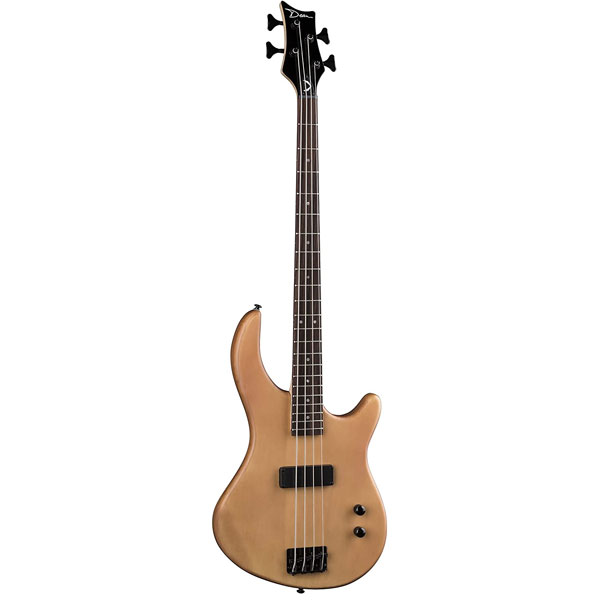
| Estimated Price | $200 |
| Weight | 9 lbs |
| Material | Basswood/mahogany body, maple |
| Fretboard | Rosewood, 22 frets |
| Pickup Configuration | Single soapbar pickup |
My Review: The pure performance of the Dean Edge E09M is what really caught my attention. Almost everything was better than expected, the single pickup had enough punch and the satin finish of the bass is so smooth. In my opinion, the warm tone is perfect for blues and rock music, with the simple tone controls you can really meld the tone the way you want. It is thick, warm, and all kinds of groovy. The low tones and the high tones are equally expressive.
Key Specs and Features: The design of this bass is not meant to be attractive, but effective. Some people dislike it but in my opinion, it’s cool in its own minimalistic way. The top wing of the guitar is large while the lower wing is small and short. The body is made out of basswood and mahogany giving it wonderful resonance with the lower tones of an instrument, which is a lovely quality to have in a bass guitar. The smooth and finely tuned bolt-on neck made from maple wood, featuring a fingerboard made from rosewood and vintage abalone-dotted inlays with 22 frets. The hardware is pretty usual, standard vintage-style bridge with four fully adjustable saddles and a set of die-cast tuning machines on the headstock. The bass is equipped with Dean sourced soap-bar form passive mode pickup which allows the bass to be responsive and highly adaptable to different styles of music. The controls are quite basic and come in the form of a volume and treble controls.
Target Customer: This is a great practice bass for those who need an inexpensive setup. It is very affordable and made for long playing sessions without compromising on sound quality or your overall experience.
Bottom Line: The Dean E09M Edge has good tuning, sounds great, and it’s well built and sturdy. The best part, all of this offered at a very affordable price range a true bang for the buck bass guitar. For all the beginner musicians looking to buy the first musical instrument, this can be a perfect pick.
12. Epiphone Toby Standard-IV
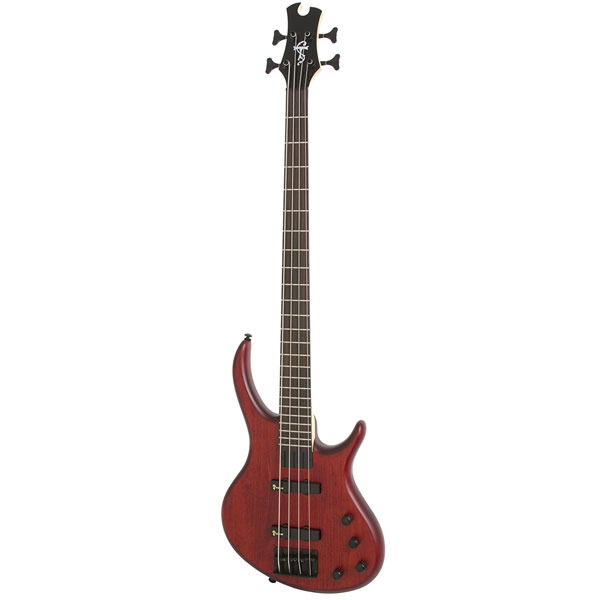
| Estimated Price | $200 |
| Weight | 8 lbs |
| Material | Radiata body, maple neck |
| Fretboard | Rosewood, 24 frets |
| Pickup Configuration | 2x TBT Dual Rail humbuckers |
My Review: This bass intrigued me because Tobias is a high-end bass manufacturer. What is really amazing is that it has a bass and treble control, but not active electronics. It means you can have the tone control of an active bass without worrying about the battery going dead or the electronics simply pooping out at a gig. If you are looking for something fancy you won’t find it here. I loved the smooth and fast neck and its lightweight. A great bass that is playable and fun, you can enjoy it as much as any other bass in its price range out there or even more.
Key Specs and Features: The bass is designed in a very interesting shape, the contours and sleek lines are designed for comfort, but good looks as well. The tonewood, as used by the manufacturer, is pretty rare radiata, though some would say it’s made out of pine. The body is quite light with a nice balance to it. The bolt-on neck made out of maple is somewhat asymmetrical, its thin neck design allows for faster playing. The fretboard of the guitar is made out of rosewood with 24 frets without fret markers and a 34” scale. The fully adjustable bridge provides the bass with some nice string stability, as well as a good level of action and flexibility with sound. The hardware is all black. Toby Standard-IV contains a set of TBT Dual Rail humbuckers that deliver a pretty neat and versatile tone. There are four knobs, master volume control, bass cut, treble cut, and pickup switch.
Target Customer: This is bass for someone that is looking to get a pretty neat instrument in the lower price range that is going to last. It has very interesting looks as well as sound so it is an awesome bass to grab onto at the beginning of the groove journey.
Bottom Line: This bass holds its own as one of the best in the range of entry-level bass guitars. It brings a great balance of style, functionality, and great tone.
13. Jackson Series Spectra JS2
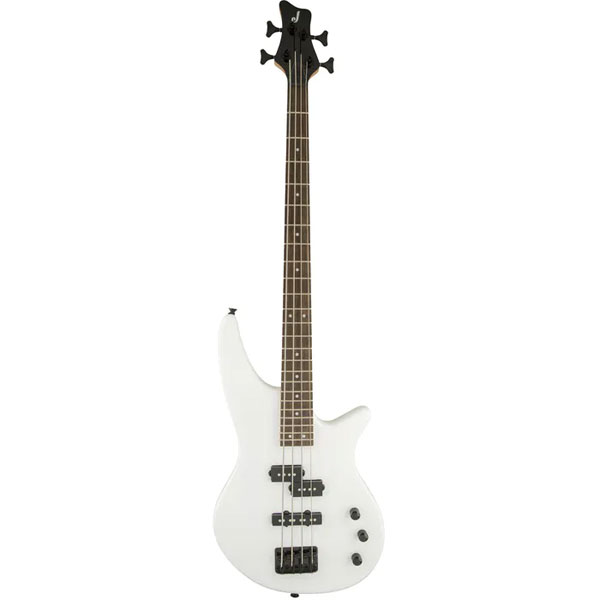
| Estimated Price | $200 |
| Weight | 9 lbs |
| Material | Poplar body, maple neck |
| Fretboard | Laurel, 24 jumbo frets |
| Pickup Configuration | Split-coil, single-coil |
My Review: In early 2019, Jackson Guitars unveiled their JS Series Spectra collection of bass guitars. The bass that got me intrigued was the JS2 and the first impressions are pretty great! The curvy body design and nicely balanced weight is the first thing that stood out. For the affordable price you get your fill of bass, it sounds nice and bassy with very nice brightness. It feels versatile and able to perform in different styles of music. The ones it performs the best are metal and rock in my opinion. The jumbo frets are a great feature for beginners just starting to find their way around the instrument.
Key Specs and Features: The body is made out of softer poplar which is an economy-focused design choice. It delivers an extra degree of resonance and a reliably meaty tone. Its curvy and lightweight may not be as popular as ash or mahogany it offers different qualities. It has a bolt-on maple neck with a 34” scale length with 24 jumbo frets and a fretboard made out of laurel with a nice smooth satin finish. The headstock is a really cool unique 2×2 design. The bass is fitted with a P/J Pickup Configuration that performs really well. It has one single-coil at the bridge and a split-coil pickup at the neck. A nice feature is the push-pull volume control that sets up an active or passive function. The active function offers a nice boost control that adds more in the low end. Tuning machines are Jackson-designed die-cast sealed and they hold up well, not a lot tuning complaints.
Target Customer: The new JS2 is a bass that will make beginners want to pick it up and practice. For people who like to rock or even those that like to play that funky music, it can deliver.
Bottom Line: An excellent, affordable bass that holds it is head high, it can definitely bring out the rock star in you. T JS2 bass emerges as one of the most affordable and versatile offerings of the year.
14. Peavey Milestone
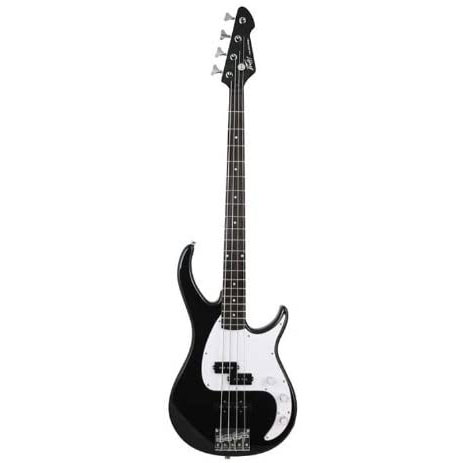
| Estimated Price | $200 |
| Weight | 12 lbs |
| Material | Maple body, maple neck |
| Fretboard | Rosewood, 20 frets |
| Pickup Configuration | Split-coil, single-coil |
My Review: With the modern design of the Peavey version of J-bass, this bass can stand amongst some of the best affordable basses in this price range, it is versatile and functional. The body is quite well rounded, a little bit heavier but it is still comfortable and sleek. It has a Jazz bass feel with the slim neck and narrow nut, but with some differences. With passive electronics, it sounds warm and welcoming with a good degree of old school thump about it. As well as the looks the tone is also designed to have similarities with the Fender Jazz bass, it has enough punch to satisfy any fan of a more aggressive tone. It is quite capable of providing some pretty deep tones.
Key Specs and Features: Compared to Fender’s timeless design the body of the Peavey is a little bit stretched out. While the extended upper horn improves balance the deep lower cutaway offers decent access to the upper frets which is great for soloing. The body is made out of solid maple while the C-shape neck is a standard maple with a 12” radius rosewood fretboard containing 20 medium-jumbo frets. Peavey Milestone comes with the standard flush bridge that sports four fully adjustable saddles and standard dies cast tuners. The split and single-coil pickup arrangement offers some tonal flexibility and being passive, the two-volume/one tone control set is quite easy to use.
Target Customer: For anyone that is starting their bass journey to the bottom end, this is the bass for you. It plays well, is relatively comfortable, and will get you up and playing quickly. Awesome for jam sessions and practice it will help you develop your skills in the bass realm.
Bottom Line: It’s a shame Peavey is not more popular, the bass is really well balanced for any entry-level player that wants to groove. As a first bass, you can’t go wrong with it. Peavey Milestone is among the most promising options on the market.
15. Yamaha TRBX204

| Estimated Price | $300 |
| Weight | 11 lbs |
| Material | Mahogany body, maple neck |
| Fretboard | Rosewood, 24 frets |
| Pickup Configuration | Split-coil, single-coil |
My Review: The thing I like about this Yamaha TRBX204 is that its tone punches way above the price. It has a wide range of sounds that you can create with the tone controls. It fares quite well in live and studio sessions. The tone definition is great and I especially love how it can hold the low-end spectrum of tones. It offers features like an active preamp, classic tonewood construction, and a design that looks great.
Key Specs and Features: The shape of the bass is a standard Yamaha design, with a deep cutaway under the neck joint. The full-body single coloring, with several options available for sale, is great since it allows a whole lot of options to the buyer. The body of the guitar is built out of mahogany, a great choice in my opinion. Mahogany gives the bass strong resonance with a thick and full tone. The body is quite sturdy and strong. The bolt-on neck is a standard maple piece with a rosewood fretboard and a very comfortable profile. The overall quality of the hardware is good and every component does its job more than well. It has a set of pretty decent active pickups, the standard P-Bass setup with a single-coil in the bridge position, and split-coil at the neck. The output is not as strong as with a humbucker but the sound is still powerful. The overall quality of the hardware is good and every component does its job more than well.
Target Customer: It’s affordably priced so it’d be a great beginner bass but it’s a good choice for general use for a more advanced player too. You might want to eventually consider a pickup swap to something a little more distinctive and wide-ranging. For anybody that is looking for a bass that will last them for a long time.
Bottom Line: Considering that it is an active bass in this price range, it’s a must buy. A solid quality bass that offers a balanced performance this Yamaha proves again why they are still holding the standard in the industry.
16. Gretsch G2220 Junior Jet II
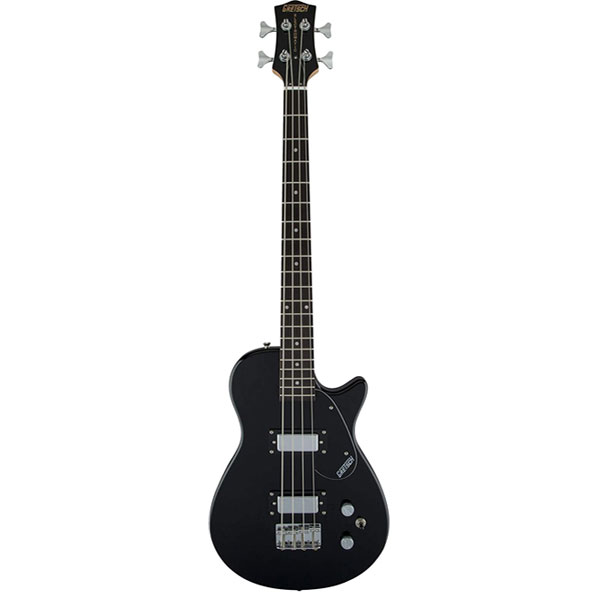
| Estimated Price | $300 |
| Weight | 9 lbs |
| Material | Basswood body, maple neck |
| Fretboard | Rosewood, 20 medium jumbo frets |
| Pickup Configuration | 2x Gretsch mini humbucker |
My Review: The thing that surprised me about the Gretsch G2220 Junior Jet II Bass is the versatility. You can comfortably play different music styles. The tone you get out of it is perfect for precision work as well as smooth bass lines. The general perception is that short-scale instruments, especially basses, sacrifice some tone for comfort and playability but that is not the case here. The tone from both pickups is clear and bright, the passive pickups do a reasonable job of conveying the tone of the instrument. It has just enough of fatness and punch. It provides plenty of vintage sounds that work well in rock as they do with many other modern genres that require a little retro feel on that low-end.
Key Specs and Features: The single-cutaway body shape is made out of basswood. The black gloss-finish fits perfectly with the D-shaped, sleek, and slinky maple neck. It’s easy to navigate, and the set-up is generally very good with no sharp fret ends. The neck is a shorter scale that features a rosewood fretboard with 20 well-placed medium jumbo frets and a Jet style headstock. It comes with a vintage bridge that sports a set of four fully adjustable saddles. All the hardware is chromed, the tuners are accurate and the bridge holds intonation quite well. It has a set of Gretsch mini-humbuckers with a chrome cover on each one. This gives the bass some character. Basic controls, master volume knob, and a tone control knob.
Target Customer: For people who like a simple instrument without all the bells and whistles and are looking for an equally simple tone without too much fuss, the Junior Jet II is not going to disappoint. For those bassists that like some soulful grooves this may tick your boxes.
Bottom Line: Solidly built, solid tone, comfort, playability. If you’re looking for a decent bass with surprisingly good sound but and don’t have much money to work with this bass gives you definitely plenty of bang for your buck. It’s easily one of the best cheap bass guitars.
17. Daisy Rock Candy
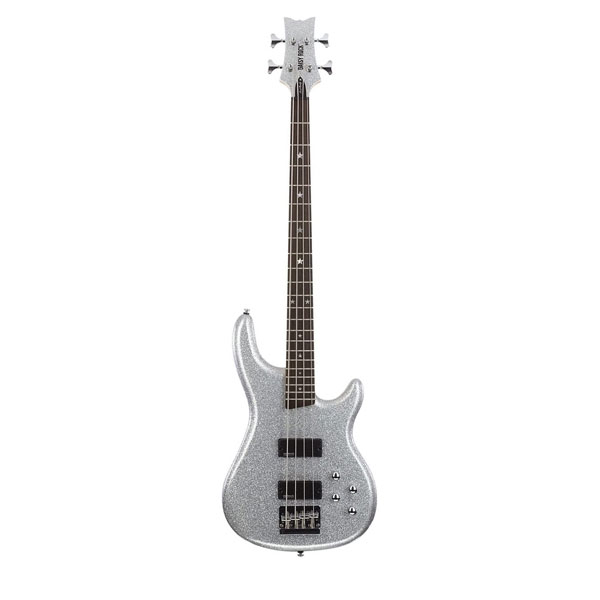
| Estimated Price | $300 |
| Weight | 7 lbs |
| Material | Sycamore body, maple neck |
| Fretboard | Rosewood, 22 frets |
| Pickup Configuration | 2x EMG pickups |
My Review: Oh this bass is something let me tell you. Most basses are designed to be played by man but not Daisy Rock Candy! This one is all about girl power! Don’t be fooled by the playful image, trust me it can make some noise.
Key Specs and Features: It has a body that is slightly modified to suit girl players more, but still it is not such a different bass than most. The P Bass style double-cutaway body is made from sycamore, which is a light mixture between maple and mahogany in terms of density. The C-shaped neck is slim and smooth, quite narrow for smaller hands. The neck is made out of maple with a 34” scale length and it features a rosewood fretboard with 22 medium-sized frets. Of course, it has star inlays that bring out its girly character. You get a pair of Select by EMG pickups with active EQ that work well in delivering nice smooth sound with high output. In terms of controls, you have a master volume knob with two 12db cut/boost knobs for bass and treble and a pickup blend control that allows for more versatility. All of the hardware is chromed which adds even more to the sparkly girly look.
Target Customer: This bass is great for practice and even your first band jamming sessions. Despite not having the quality of tone of some similarly priced basses it still can offer more versatility than many other basses in its price range.
Bottom Line: It’s sweet, rocky, and ready to deliver some attitude on the stage. It’s about encouraging young girls to pick up a bass and start their musical journey.
Choosing the Right Cheap Bass Guitar (Buying Guide)
The first thing you need to know is that the bass guitar is composed of a lot of different parts and features. Some features are more suited for different styles of music so you should choose your bass in regard to the style of music you are going to play. That is going to make it much easier for you to chose because you will know approximately what you need. The key points you should pay attention are these:
Body Components and Features
I know, it seems like a lot of information but bear with me, I’m going to walk you through these topics and give you some tips that will make you pay attention to important stuff when buying a new bass.
Body Type and Shape:
There are a lot of different looking basses out there. The looks can vary from traditional to modern and the combination of the two. The shape of the bass doesn’t necessarily have a big impact on the sound but it does have an impact on the way you play and your posture, which is very important. The body type of bass has a huge impact on the sound. There are different types of bodies:
Hollow: This type is hollow on the inside similar to an acoustic guitar, much lighter but also a greater chance of feedback, great for unplugged playing thou.
Solid: Made from solid pieces of wood, it offers greater sustain than a hollow body guitar but heavier.
Semi-hollow: Something in between a solid and a hollow body bass, it has a great warm earthly sound. They offer great versatility in playing.
The most common body shapes are those similar to the Fender Jazz bass and P-bass (Fender Precision bass). While the Fender Jazz bass has an offset body shape the P-bass has a body similar to a Stratocaster. Nowadays there are a lot of independent bass luthiers that create crazy body shapes with custom features.
You should take into consideration how the guitar lays on you when you strap it on, is it comfortable, and how your forearm lays on the edge of the upper body. You mustn’t cut the blood flow to your hand while playing. Take time trying the bass out in the store, and don’t be afraid to ask questions.
Body Material
The material of the body is supeeer important, not only to the sound of the bass but also for your well being…trust me. Imagine playing a longer gig with super heavy bass, not good right? I prefer something that is light but has a good sound, or at least a mixture of the two. The qualities that looked in the wood are those that provide great resonance, tone, and playability. The sound of the wood is shaped by its density or softness, harder woods are more aggressive and brighter sounding while softer is more resonant and warm. It all comes to personal preference at the end of the day. The most commonly used materials for basses are:
Maple: Usually heavy and hard, exceptional sustain and clear sound.
Mahogany: Quite heavy, with medium hardness and density, great sustain and warm sound with emphasis on low-mid and lower-range tones. Victor Wooten has a well know Fodera bass made out of mahogany.
Alder: P-basses are made of, full balanced tone with excellent clarity, warm sound. Famous bass player Jaco Pastorius used to play a Fender bass with an alder body.
Ash: An opposite to alder, ash has a bright sound with plenty of basses and bright treble, several species of ash offer unique differences, usually bright and full sound. Marcus Miller is known to use a jazz bass that has an ash body.
Basswood: Very short sustain, inexpensive.
Take notice when picking the bass for yourself in terms of your physique. A heavier instrument can sound great but also take a toll on your body especially in the long term.
Neck type/material
The neck of the bass is a very important key feature you need to pay attention to. It has the role of projecting the sound from the strings into the body of the bass and the pickups as well as laying in your hand comfortably. These are the types you are going to encounter:
Bolt-on neck
The bolt-on is the most popular neck design. The neck is basically bolted onto the body with nuts keeping it in place so it doesn’t move around. This type of neck offers a great string vibration, good sustain, and great stability. Bolt-on necks are the most common type of necks found on bass guitars.
Set neck
Set necks are little more difficult to attach, a mortise joint is used to join the neck with the body of the bass. They offer better sustain than bolt-on, they can be found on many high-end guitars.
Thru-body neck
The thru-body necks are the best but also the most expensive and the most difficult to produce. In this case, the neck goes all the way through the body as a solid piece of wood, and then the sides are glued to it, giving the bass the best sustain and stability. They are typically found on expensive custom made basses.
The kind of wood the bass is built from is the heart of its tone. Pickups, electronics will also shape the sound of the instrument but it all begins with the wood, that’s why the material of the neck is very important, in combination with the body of the bass you get a lot of different variations. The most common material used for necks are:
Maple: Sometimes used for the body of the bass, maple is most commonly used for necks. It has a clear bright tone.
Rosewood: The opposite of maple, its softness gives it a warm mellow sound.
Ebony: Harder than maple it provides excellent clarity with amazing high frequencies. Ebony is really good for fretless basses.
Headstock/nut
The headstock is the part of the bass that has a balancing role as well as an aesthetic. It holds the strings which are connected to the pegs and it serves to balance out the neck and the body. There are different headstock designs these days, from traditional to more innovative, to headless basses.
At the base of the headstock and beginning of the fingerboard is the nut. The nut is critical in delivering the sound of the bass. It’s a small piece of material on which the strings lay and is crucial in guiding the sound and the vibrations that the strings make toward the wood. It affects the tone massively, so when fitted well it can create wonders for the sound of the bass. If it’s not fitted correctly it can create a lot of tuning and intonation problems and you don’t want those bugging you every time you start grooving. They are typically made out of bone, plastic, brass or graphite. As it’s the point where the vibration is transferred to the wood the density of the material it’s made of is really important. Each material has its own benefits but in my experience nuts made from bone are the best ones. It’s a good thing you can replace them so you can try out different ones for yourself and see which one is best suited for your style of playing. Just remember to not overlook this important part and keep it in mind when getting your next bass.
Fingerboard/frets
The fingerboard or fingerboard is where your fingers create magic! The fingerboard is a piece of wood glued on top of the neck and it’s the part of the bass that usually has the most amount of wear so harder woods are used for it. Most commonly the fingerboard is made out of woods like rosewood or maple. Rosewood is usually brown in color and has a warm, dark tone while the maple is white and has a more percussive sound. The thing to pay attention to is the fingerboard radius. In short, the radius is the curvature of a circle of which the small segment is equal to the width of the fingerboard. For example, a circle with a 12” radius yields a 12” fingerboard radius, which is slightly flatter than a 9.5” radius on a fingerboard of the same width, the lower the measurement, the greater the curvature, and vice versa. Why is this important? Because it impacts playability, for example, a bigger radius is better for playing single notes while a smaller is better for chord playing, but it all comes down to personal preference and what best suits your hands.
When you grab the bass you going to notice it has these fret marks on the side of the neck (side dots) and on the fingerboard. Most basses have them. These things can be really helpful especially when playing in dark and places where there is not much light falling on you. They help you keep your sense of orientation when playing and going up and down the fingerboard, the side dots are really useful so you don’t have to twist your neck trying to see. People have started to play around with these fret marks experimenting with different shapes and sizes, a very useful feature indeed.
What are frets thou? The frets are thin wire strips spaced at very precise intervals along the entire length of the fingerboard. Basses usually have 21, 22, or 24 frets. As a fret is a note, the more frets you have the more notes, which is very useful if you are big on soloing. The more frets the more physical freedom you will have exploring the fingerboard.
Frets come in different sizes, basses mostly have jumbo frets. The size of the fret is essentially how big and thick the wire is. There are small, medium, jumbo, and a couple of distinctive sizes concerning the brand of instrument. The size of the fret does impact the playability, jumbo frets for example provide better playability and sustain because it’s easier to press the strings. Again it comes down to personal preference, I like jumbo frets on my basses as I feel they are best for having a good tone and control over the fingerboard. Some basses have a “zero” fret which moves back the nut and takes its place on the fingerboard making the open strings sound more like the fretted notes.
Scale Length
The scale length refers to the distance between the nut and the bridge. Why it’s important because it impacts the playability and the sound of the instrument in a big way. It affects the quality of the tone you get from the strings, the lower the pitch the longer the strings. The standard these days is 34” which we call “long-scale” basses but there are also short (30-32”), medium (32-34”), and extra-long (36” plus) scale basses. Not all scale lengths are the same and there aren’t any firm rules on this between bass and strings manufacturers so it’s definitely something you should pay attention to. A lot of players have a problem with choosing their strings lengths which is why you need to know your scale length.
Electronics and Pickups
When you hear somebody say bass “electronics” they are usually talking about the wiring and all the little knobs and switches. Electronic parts of the bass are in charge of getting the sound from the bass to the amp. Most of the basses have one volume knob that controls the pickups or two separate knobs for each of the pickups. Some people prefer to control the pickups with a master volume knob, some like separate knobs, and some like to use the pickup switch which allows them to change from bridge pickup to the neck pickup.
Pickups play an internal role in the sound coming from your bass, their positioning whether they are closer to the neck or the bridge. Closer to the bridge sound is brighter and thinner while closer to the neck the sound gets more warm and full. The same thing stands for whether they are passive or active.
There are different variations on the pickups you can use:
Single-coil: They have one coil wrapped around the magnet giving an often bright and clear sound, a common problem with them is that they can pick up noise and create humming sound. Fender Jazz basses are known to use two single-coil pickups.
Double-coil: Created as a substitute for two single-coil pickups, known as humbuckers they are used to cancel out the humming sound. They have more output than single-coils and have more high frequencies.
Split- coil: You basically split a humbucker in half and you get a spilled-coil pickup, usually used on P-basses.
Four String or a Five String Bass?
Now, the question you should be asking yourself. What should I get in terms of playability and versatility? It all comes down to how low or high you want your sound to go and what style of music you want to play.
The four-string is a great option for you if you want to a have a normal range of things you can do with the instrument, I wouldn’t necessarily say that it’s easier to play it’s just that you are little more limited compared to a five-string, therefore, you have fewer options to explore, of course, you can tune it down to get more of those lower frequencies if you require it. For most music styles a four-string is enough, but if you are into more bass oriented music where you need those low notes, you should get a 5 string in my opinion, it just opens up a lot more in terms of versatility and things you can do especially when you start to play around with the tuning of your bass. For example, you can switch from a standard 5 string BEADG to EADGC getting more versatility in terms of soloing. The same can be done on a 4 string, going from EADG to BEAD adding more deep bass notes to the bass. There is also an option of getting a 6 string which opens a whole lot of different possibilities.
It has been proven that creating magic is possible on any type of instrument by the players such as Jaco Pastorious, Stanley Clark, Tom Kennedy, Richard Bona, and many more.
Which strings should I use?
We talked about which bass you could play, but now we need to figure out which strings you should use. There are a lot of different types of strings you can use and also a lot of factors that decide the sound and quality of the string. The importance of getting the right strings can be crucial for the sound of your bass.
One of the most common debates is should you get roundwound or flatwound? Roundwound strings have a wire that is wrapped around the core wire producing rounded ridges along the string, therefore, give the bass a sound more suitable for rock and funk music, while the flatwounds are an older version of strings have a flat ribbon wire wrapped around the core giving a more smooth tone which is why they are more used in jazz, soul and blues music.
The material of the string influences the sound a lot. Most commonly strings are made from nickel, cobalt, stainless steel, or combination of the three. If you need a brighter sound you should get a nickel, cobalt ones have a wide dynamic range and stainless steel have a crispy bright sound.
When putting strings on your bass you’ll discover that they are categorized in gauges. The gauge determines the thickness of the strings. The thickness has a large influence on the playability of the bass along with the string material. Light gauge strings are more suitable for styles like funk slapping or walking bass lines while heavy gauge strings are more for heavy metal and if you want to tune your bass lower, from E to D for an example. The light gauge ones are also a little lighter on the fingers which is important if you are a new player.
In my opinion, you should play around with string types and figure out what is best for you.
Active or passive pickups?
If you are new to bass guitars you must be thinking, what are active or passive pickups?
Active pickups use a pre-amp powered by and 9-volt battery or in some cases 18-volt(two batteries). This allows for better sound control over your bass in a way that you can boost or cut your bass frequencies and also your signal output is much stronger than on passive pickups. With active pickups, you can be creative and play around with the sound, make presets for different styles of music. Just keep in mind that this is only possible while you have a charged battery powering them, always keep in mind to unplug your bass when not using to avoid getting your battery drained.
The traditional bass passive pickups have been in use for a long time, giving those all-time classic bass lines that punchy, fat dynamic sound. They don’t offer too much control over your bass except the bass and treble. You will have fewer options for shaping your tone in exchange for that vintage sound in many cases, which is not a bad trade considering that you can always upgrade your bass with high-quality pickups later on.

My name is Chris and I’ve had a passion for music and guitars for as long as I can remember. I started this website with some of my friends who are musicians, music teachers, gear heads, and music enthusiasts so we could provide high-quality guitar and music-related content.
I’ve been playing guitar since I was 13 years old and am an avid collector. Amps, pedals, guitars, bass, drums, microphones, studio, and recording gear, I love it all.
I was born and raised in Western Pennsylvania. My background is in Electrical Engineering, earning a Bachelor’s degree from Youngstown State University. With my engineering experience, I’ve developed as a designer of guitar amplifiers and effects. A true passion of mine, I’ve designed, built, and repaired a wide range of guitar amps and electronics. Here at the Guitar Lobby, our aim is to share our passion for Music and gear with the rest of the music community.

Very well written! I’m Looking for a Bass for my nephew to learn on and I’m not sure if he needs a 4 string or 5 sting. The Yamaha you recommend looks awesome and I know he’d like it but I’m leaning towards something 4 string.
For nearly all genres and playing situations, a 4 sting will be perfectly adequate. Think of the 5th string as something “extra”, not like something he will feel is “missing” with a 4 string bass. A 5 sting effectively has one extra string that would allow him to dig down into lower octaves which may in some cases be useful, but certainly not something required especially in the beginner stages of his learning to play.
I’m a bass player, and I’ve been looking for a good, cheap bass guitar. I’ve been reading your blog, and I think I’ve found the perfect one! I’m going to buy one of these guitars.